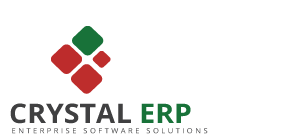I propose a broad movement to collect and preserve the books and other physical materials that document the creation and development of 20th century technology.
As IT professionals, we naturally think of information as being digital. But vast quantities of technological data exist in books, papers, notes and other physical formats. These data, created by researchers, scientists and inventors, are the primary sources that document the creation and evolution of technology in the 20th century. If we lose these sources of information, we lose a piece of our technological heritage. I propose a broad effort to preserve these materials.
At a recent dinner, I sat next to a retired physicist from Raytheon whose work focused on the development and application of microwave technology. Microwave use goes far beyond household ovens, including radar and the creation of industrial diamonds. The scientist had taken it upon himself to preserve an entire room’s worth of books and written documents that describe the history of microwave technology. He was concerned about what would happen to this material after his death. While his daughter kindly offered to preserve the material, it’s not a long-term solution.
That shocked me into thinking about all the technology developed in the 20th century. What’s happening to the documentation that describes the evolution of scientific and technological developments across innumerable fields? Pockets of materials are probably being preserved in various industries and university research facilities, but as far as I know, there is no concerted effort to store a broad base of technology documentation.
I see two compelling reasons for a technology-focused preservation. First, we already take steps to protect other kinds of history, including cultural artifacts such as music, art, literature, film and photographs. Political history (wars, elections, laws and so on) is similarly well covered. Yet culture and politics are directly influenced by technology, so a lack of technological history would give us a poor and incomplete understanding of the 20th century.
Second, preserving information in a non-digital format is a hedge against digital disaster. Besides the historical research, there is another reason for preserving physical material (in addition to searchable digital documentation): the ability to be able to recreate a technology if our digital information goes away. That may seem apocalyptical and hopefully the probability is minute, but we really don’t know as our digital, electrical and electronic age is very young in historic terms. What would happen if the sun geomagnetic storm of 1859 (called the Carrington Event) that was much stronger than anything seen since were to occur again?
The predictions for the impact of such an event are dire. You probably shouldn’t lose any sleep over it, but, still, an ounce of preservation is worth a pound of cure.
How to address the situation? Although this may be simplistic, there seem to be only three steps that need to be taken:
1. Sponsorship: If organizations can adopt miles of highway, why can’t they adopt technologies? This could be a company with a close connection to a technology, an association that deals with the technology or some other means. The cost could be relatively low, such as a room in a business or a university or sponsorship in an underground former limestone mine in Pennsylvania with some kind of archivist support (which could be shared among multiple technologies).
2. Abstract: Although a process of digitization might take place, all that really needs to be done is an abstract and indexing scheme. The abstract says what is available and elicits interest whereas the index tells where to find it.
3. Clearinghouse: Some organization could maintain the abstract, indices and location of all the saved information. Since this is an electronic reference set and individual technology preserving organizations could actually contribute the information. Some Web company may offer as a public service to provide this capability as the cost could be very low.
The real challenge is how to get started. Those of you with a passion for such a technological preservation could create a social media group, such as on LinkedIn, and go from there.
Mesabi Musings
Tempest fugit. We only have one chance to do the right thing. Hopefully I have given one or more readers a germ of an idea that will grow into a sustained, collaborative effort to preserve our 20th century technology patrimony. Do you think such an effort is necessary? If so, is it even feasible? I welcome your comments.
David Hill.


Leave a Reply
You must be logged in to post a comment.